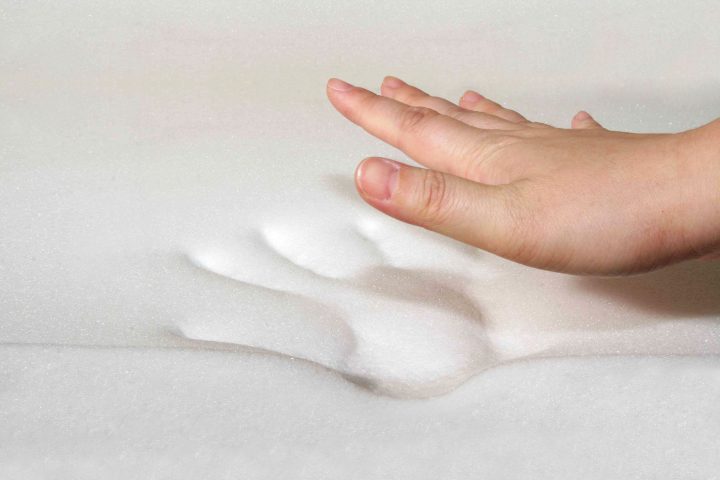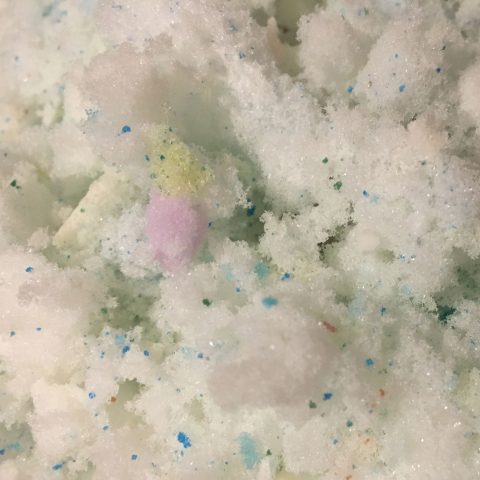
Magic memory foam!
Memory foam pillows have become quite popular. If you’ve ever felt memory foam, you know that it is a very unique feeling material. It has a magical sort of texture that conforms to pressure unlike any other pillow filling.
Memory foam’s magical squishy character is referred to as visco-elasticity.
Memory foam has both the viscous properties of water and the elastic feel of traditional poly foams. These unique characteristics are what makes memory foam pillows so popular. If you rest your head on one, the memory foam will compresses and conform perfectly to the shape of your body. When the pressure on the pillow is released, the memory foam slowly resets itself and reverts to its original rectangular shape.
This makes memory foam very good for:
- providing comfortable support for your head/neck and
- evenly distributing your body’s weight, eliminating pressure points.
Sometimes we get emails asking, “what’s the best memory foam pillow?”
Before I attempt to answer this question, let me confess that I’m not a big fan of memory foam pillows. I’ve tested several types and their foul odor consistently turns me off. Memory foam is manufactured using polyurethane and several other chemicals. Because of the volatile organic compounds (VOCs) contained, memory foam unfortunately smells much like paint or calk. The cause of this stench is referred to as “off-gassing.” It is a common and well-documented issue and is the most frequent complaint that consumers have with memory foam. To make matters worse, there are various reports and studies which indicate that memory foam may be somewhat toxic. *sigh*
That said, I recognize that those tradeoffs aren’t going to dissuade everyone from buying a memory foam pillow. Every type of pillow has both pros and cons and no single pillow is right for everyone.
Still want one? Read on…
The best memory foam pillow is NOT the solid loaf type.
Most mass-produced memory foam pillows consist of a single solid piece of foam wrapped in a fabric case. This is considered a substantial disadvantage by many users, myself included. No matter how you fluff, smoosh, squash, scrunch or sculpt this solid piece of memory foam, it will always revert to its original rectangular shape. If it feels uncomfortable, you can’t alter its shape to better accommodate your sleeping style like you can with other popular pillow filling like down.
Traditional memory foam is not very breathable. A single piece of dense memory foam doesn’t allow air to circulate freely. As a result, it will absorb and retain the warm humid air generated by your body. Alternatively, a breathable pillow filling type like buckwheat hulls allows warm air to escape while being replaced with fresh, cool air.

Shredded Memory Foam
Because of these shortcomings, I recommend “shredded” memory foam pillows.
As its name implies, “shredded” memory foam filling is simply torn into tiny pieces. The individual pieces of foam move independently, allowing the pillow to be moldable. You can sculpt it much like a down pillow—it will shift and change into whatever shape you desire.
Shredded memory foam also offers improved breathability vs traditional memory foam. There’s considerably more negative space for air to flow freely between the pieces of filling inside the pillow. This prevents it from getting as warm as a traditional solid-piece memory foam pillow. It certainly isn’t as breathable as buckwheat hulls or microbead pillow filling, but it isn’t an uncomfortable obstacle to good rest either.
*Note* Shredded memory foam pillows are often marketed as “bamboo pillows.” Why? Because bamboo sounds like an environmentally responsible, safe component to use in a pillow. Marketers love to use the word bamboo in their product descriptions; it appeals to eco-conscious consumers. So where’s the bamboo? The truth is in the fine print: apparently their rayon fabric case is derived from bamboo.
The best memory foam minimizes the off-gassing phenomena.
Manufacturers are sympathetic to consumer’s complaints about memory foam’s off-gassing. Thus some products are beginning to appear on the market that are filled with foams designed to reduce VOC emissions. If you’re looking to avoid memory foam’s foul smell (and its potentially hazardous effects), I’d shop for products that acknowledge memory foam’s shortcomings and attempt to address them. I cannot attest to their success in this goal, but certain foam fillings such as CertiPUR™ are becoming popular alternatives. Their foams are apparently produced without using:
- ozone depleters.
- PBDEs, TDCPP or TCEP flame retardants.
- mercury, lead, and other heavy metals.
- formaldehyde.
- any of the phthalates regulated by the Consumer Product Safety Commission.
For those who are open to non-tradional solutions, I think that there are far better options:
… like our own Hullo buckwheat pillow! Give one a try and I think you’ll agree that it’s superior to other pillow types. Don’t take my word for it — check out these customer reviews.



